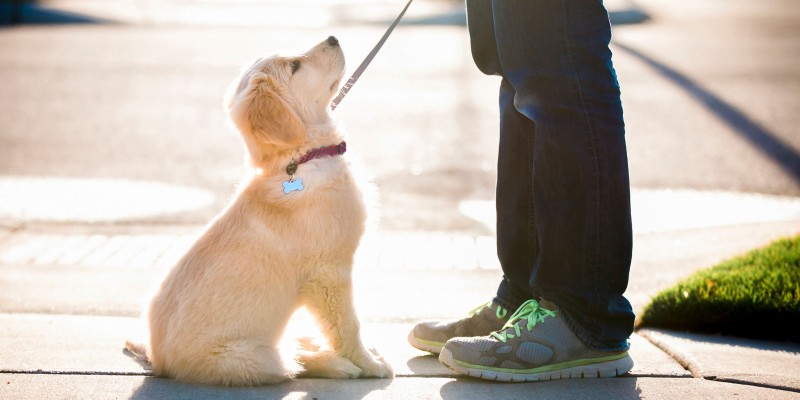Puppy Training Techniques: Teaching Basic Commands for a Happy Pet
Puppy Training Techniques: Teaching Basic Commands for a Happy Pet
Blog Article
Leading Young Puppy Training Methods to Ensure a Well-Behaved Pet Dog
Effective pup training is vital for cultivating a well-behaved friend, and numerous methods can dramatically affect a pet dog's development. As we discover these approaches additionally, it comes to be clear that the success of young puppy training hinges on a mix of techniques that can change your pet dog's actions in exceptional methods.
Positive Reinforcement Techniques
Utilizing favorable support strategies is necessary for effective pup training, as it encourages desired behaviors via benefits instead than penalty. This method capitalizes on the natural discovering processes of pet dogs, strengthening good behavior by offering prompt and concrete incentives, such as treats, appreciation, or playtime. By linking positive results with particular activities, puppies are more likely to repeat those actions in the future.
Rewards ought to be given instantly after the preferred behavior happens to produce a clear connection in the puppy's mind. Furthermore, differing the kinds of incentives can maintain a pup's rate of interest and inspiration throughout the training process.

Consistency in Educating Commands
Preserving consistency in training commands is crucial for reinforcing the lessons discovered with positive support strategies. Pets grow on regular and predictability, so using the exact same spoken commands and hand signals for particular behaviors is important. This harmony assists pups comprehend what is expected of them, reducing confusion and stress for both the pet and the fitness instructor.

Timing additionally plays a considerable duty in consistency. Commands must be delivered promptly throughout training sessions and adhered to right away by favorable support, such as deals with or praise. This prompt reaction assists strengthen the association in between the command and the wanted actions.
Incorporating uniformity into training sessions will certainly create a stable discovering environment, promoting quicker mastery of commands. Eventually, a well-structured approach cultivates a strong bond between the pup and its proprietor, leading to a more well-behaved and loyal pet.
Socialization With Various Other Animals
Socialization with various other family pets is vital for a puppy's advancement, as it helps them learn appropriate behaviors and interaction abilities in diverse social contexts. Early interactions with various animals can considerably affect a puppy's temperament and flexibility in different scenarios. When puppies are exposed to a selection of pet dogs, they come to be a lot more confident and much less frightened, which can prevent prospective behavior problems later on in life.

Teach your pup to acknowledge signals from various other family pets, such as signs of playfulness or pain, fostering mutual respect and understanding. Normal socializing not only boosts site here your pup's social abilities but additionally contributes to their total wellness, developing a much more harmonious living setting.
Cage Training Advantages
Identifying the various benefits of dog crate training can significantly boost both the puppy's and proprietor's experience. Crate training provides a safe and protected environment for pups, ensuring they really feel secured when laid off. This feeling of security can significantly minimize anxiousness and stress and anxiety levels for both the owner and the family pet.
Additionally, pet crates act as a useful house-training tool. Pups normally stay clear of soiling their sleeping area, consequently urging them to hold their bladder until they are let outdoors. This reaction can speed up the housebreaking procedure, cultivating excellent habits early on.
When not being watched,Crate training also helps in taking care of a young puppy's habits - puppy training. By supplying a designated space, useful link owners can prevent devastating actions, such as eating on furniture or entering into damaging compounds. Furthermore, crates can be helpful during travel, supplying an acquainted area that can assist calm a pup in new settings.
Last but not least, establishing a dog crate regular motivates freedom, permitting young puppies to find out just how to be alone without anxiety. Overall, dog crate training is a reliable approach for promoting security, self-control, and tranquility, leading to a well-adjusted, well-behaved family pet.
Chain Training Basics
Leash training is an essential facet of accountable pet ownership that makes certain a safe and enjoyable walking experience for both the pup and its proprietor. Correct leash training starts early, ideally throughout the young puppy's socializing period. This training assists develop great routines and promotes favorable behaviors when out in public.
To start, pick a comfortable collar or harness that fits your pup well. Affix a durable chain, ensuring it is not also long, as this can bring about pulling and irregular habits. Start in a silent atmosphere to minimize interruptions and progressively introduce your young puppy to new surroundings.
Use favorable support techniques, such as deals with and appreciation, to urge your puppy to walk close to you. If your pup pulls, stop walking and wait for them to redirected here return to your side before continuing.
In addition, integrate brief training sessions with fun disturbances to construct your pup's emphasis. With commitment and persistence, chain training will lead to an accommodating friend, making walks satisfying for both the young puppy and the proprietor.
Verdict
In conclusion, utilizing efficient puppy training strategies is critical for developing a well-behaved family pet. Generally, these methods collectively advertise a harmonious relationship between puppies and their owners.
As we explore these methods even more, it comes to be clear that the success of pup training hinges on a combination of approaches that can transform your pet's behavior in amazing methods.
Using favorable support techniques is necessary for efficient puppy training, as it motivates preferred habits through benefits instead than penalty.Crate training also assists in taking care of a young puppy's behavior when without supervision.Leash training is a basic facet of accountable pet possession that makes certain a delightful and risk-free walking experience for both the young puppy and its owner.In conclusion, using reliable pup training strategies is critical for developing a well-behaved pet dog.
Report this page